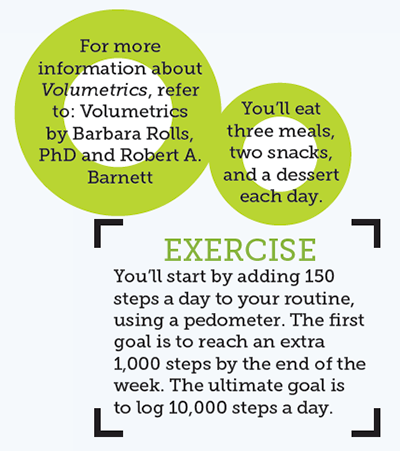By Tami Charbonnet
Imagine being able to eat more, lose weight, and feel energized. Volumetrics claims to do just that.
Are you sick of feeling hungry, tired, and deprived due to low-carbohydrate, low-calorie, or low-fat diets? If your answer is yes, you have more than likely joined the millions of Americans who have lost weight, and then regained it with additional pounds. Volumetrics takes a completely different approach to weight loss.
This nutritional plan, created by Barbara Rolls PhD, doesn’t follow the current trends of structured eating that limits food and deprives our bodies of essential nutrients. While many diets on the market simply promise weight loss, Volumetrics encourages individuals to lose weight and keep it off while eating more and feeling full. Plus, the plan is flexible enough for vegetarians, vegans, and those who need to restrict salt and fat.
Volumetrics focuses on finding specific healthy, filling food. According to Dr. Rolls, “People feel full because of the types and amounts of foods they eat – not because of the number of calories or the grams of fat, protein, or carbs. So, the trick is to fill up on the right foods with fewer calories.”
Volumetrics is a long-term plan that means you will not necessarily lose weight quickly. Instead, the goal is to change your lifestyle and work toward permanent weight loss and maintenance. To be successful, you must meet specific daily calorie goals and daily step goals for movement and exercise.
The plan allows you to eat whatever you please, while paying attention to energy density. Energy density simply refers to the number of calories in a specific amount of food. Foods with high energy density have lots of calories for less volume, while foods with low energy density provide fewer calories with more volume.
The following four categories of food will allow you to begin your weight loss journey through Volumetrics.
 Dr. Rolls splits foods into four categories:
Dr. Rolls splits foods into four categories:
Category 1
Includes “free” or “anytime” fruits, nonstarchy vegetables (such as broccoli, tomatoes, mushrooms), and broth-based soups.
Category 2
Includes reasonable portions of whole grains (such as brown rice and whole wheat pasta), lean proteins, legumes, and low-fat dairy.
Category 3
Includes small portions of foods such as breads, desserts, fat-free baked snacks, cheeses, and higher-fat meats.
Category 4
Includes sparing portions of fried foods, candy, cookies, nuts, and fats.



